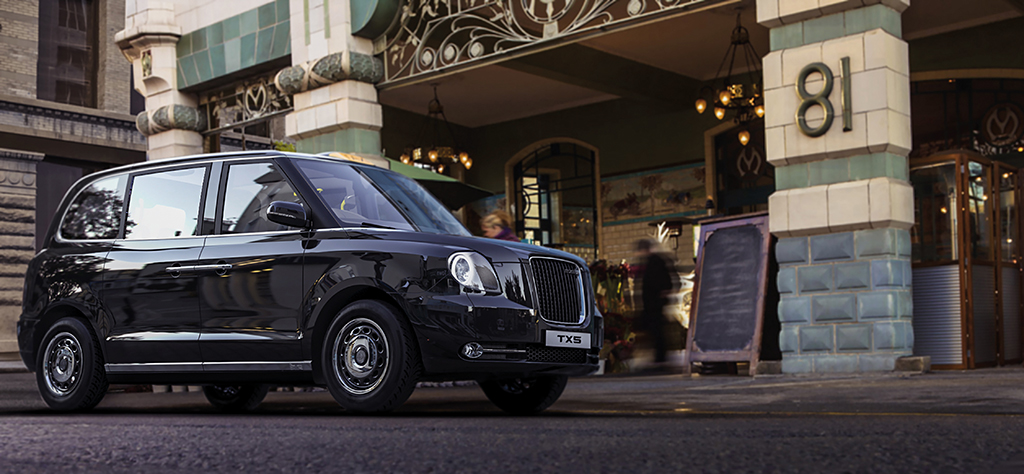Developing an electric future for London cabs

London Taxi Company has recently opened a new factory for the development and production of electric vehicles only. The firm’s chief operation officer, Paul Woolley, has since discussed the aim of its new factory and research hub with GreenFleet’s Andrea Pluck
London Taxi Company (LTC) has recently opened a £300 million factory in Coventry, which will produce only electric vehicles, alongside a new research development assembly facility which will be used to develop new zero-emission models.
In addition to this, the firm has revealed that it is looking into developing electric commercial vehicles, alongside the taxis which are already set for production.
The investment of £300 million came from Geely, LTC’s owners, and it has also been supported by £16.1 million from the Department for Business, Energy and Industrial Strategy, through the Regional Growth Fund, which was awarded in 2015.
In an interview with Paul Woolley, LTC’s chief operation officer, GreenFleet got the opportunity to find out more about the company’s electric endeavours.
Green principals
According to Woolley, the factory is unique in comparison to other manufacturing facilities in the UK because it is the “UK’s first facility dedicated solely to the production of electric vehicles”.
He said: “We will only make our range extended electric taxis and vans at the site.”
In line with the company’s “green principals”, Woolley says that the factory is an “extremely sustainable building”.
“As well as the large photovoltaic array on the roof to generate electricity, the building also recycles waste heat and water – and is extremely energy efficient”.
LTC’s research, development and assembly facility at Coventry’s Ansty Park is expected to be used to develop the new TX5 model – a zero emissions taxi – and other hybrid technology vehicles. Woolley told GreenFleet that the aim of the centre is for it to become “a centre of excellence in lightweighting technology across the group”.
The facility will be Geely’s research and development hub for the UK, which will assist the firm in cutting vehicle weight and increasing vehicle range.
LTC’s aim is for 90 per cent of group vehicles sold in 2020 to be “new energy vehicles”.
The TX5 model which is currently being built at the factory, has many differences in comparison to the iconic black cab, the TX4, according to Woolley.
He said: “The next cab will not have a single carry-over part from the TX4. It has been re-designed from the ground up as a purpose‑built electric taxi.”
Woolley added: “As well as our famous features – like easy wheelchair accessibility and high manoeuvrability – the new vehicle will have an ultra-efficient range-extended electric powertrain, which has been designed for the demanding commercial operating requirements for today’s taxi drivers.”
This technology is set to allow LTC to “dramatically” reduce operating costs for drivers in comparison with its current cab.
Other key features of the TX5 include a new forward facing wheelchair position, integrated USB charge points and Wi-Fi, and the ability to accommodate six passengers.
Production process
The factory has an expected capacity of producing around 32,000 vehicles a year, which will be a mixture of vans and taxis.
This figure is part of the firm’s aim to focus on “quality, reliability and durability,” rather than quantity.
Shortly after the factory was unveiled, it was announced that zero-emission commercial vehicles would also be added to the production line.
According to Woolley, this is to “meet the growing urban demand for these vehicles at a time of concern about air quality issues”.
LTC’s research and development team of around 200 people are currently working on building a new “core EV platform architecture” in order to “develop a light commercial vehicle (LCV) that is fit for the world’s cities in the 21st century”.
The LCV will be built using the same range‑extended EV technology platform as the taxi – which means lower running costs for the delivery drivers. Woolley said that the van is in an “advanced stage of development” and will be on the road in around a year to 18 months after the taxi.
Challenges
When asked if LTC came across any challenges when developing the EV plant, Woolley said that the main issue revolved around construction and newts. He said: “There is a lot of expertise in the Geely group in the construction of the EV plant.
“The biggest challenge came from something much closer to home, in the shape of a rare newt population in Ansty Park – which delayed construction of the factory by three months.”
In order to overcome this issue, the firm worked with Natural England in order to re-home the newts.
Woolley said this included the “construction of various ‘newt hotels’ around the edge of the site”, which was “time well-spent to ensure that we live up to our environmental credentials”.
ULEZ
An Ultra Low Emission Zone (ULEZ) is set to come into force and will charge vehicles which do not meet exhaust emission standards, including taxis.
It will operate in the Congestion Charging Zone area in London, which could see taxi firms that do not currently have a fleet which meets the required Euro 6 standard be charged a fee for entering this area, affecting its capability of operating.
GreenFleet asked LTC’s Paul Woolley how this will affect the future of the taxi industry in London. He said: “Because both taxi and van drivers earn their living being on the road, getting people and goods around the cities, they are some of the most affected by poor air quality.
“It is for this reason that many are very supportive of the transition, and for some, the new vehicles cannot come soon enough”.
Woolley concluded that “for these, there will be a marked reduction in operating costs – presenting an opportunity for small and large firms alike”.






